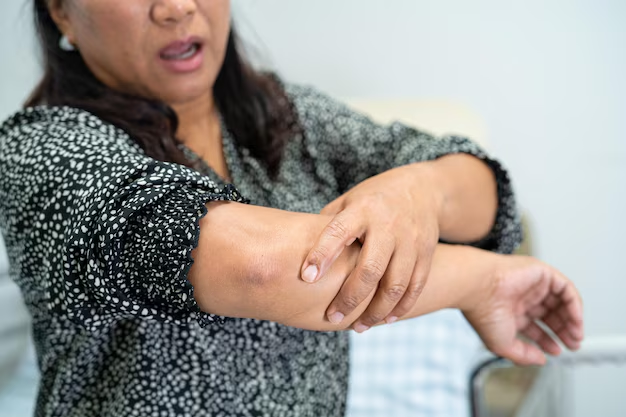Understanding Incontinence-Associated Dermatitis: What You Need to Know
Living with incontinence presents numerous challenges, one of which is the skin irritation that can often accompany it. This condition, known as Incontinence-Associated Dermatitis (IAD), can be distressing and uncomfortable. But what exactly is it, and what can be done to manage and prevent it? In this comprehensive guide, we'll explore the causes, symptoms, and effective strategies for dealing with IAD. Whether you're a caregiver, a person experiencing incontinence, or someone who's simply curious, this article will equip you with the knowledge you need.
What is Incontinence-Associated Dermatitis?
Incontinence-Associated Dermatitis (IAD) is a type of irritant contact dermatitis that occurs in individuals who experience urinary or fecal incontinence. The condition arises when the skin is exposed to urine or feces for prolonged periods, causing redness, inflammation, and breakdown of the skin's protective barrier. Unlike other forms of dermatitis, IAD is specifically linked to moisture exposure and the resulting skin irritation.
Distinguishing IAD from Other Skin Problems
It's important to differentiate IAD from other skin problems such as pressure ulcers and fungal infections:
- Pressure Ulcers: Usually occur over bony areas and are due to prolonged pressure, not moisture.
- Fungal Infections: Characterized by distinct edges and often accompanied by itching; they may require antifungal treatment.
Takeaway: Proper diagnosis is key to effective management, and while IAD is a common diagnosis among incontinence patients, consultation with a healthcare professional ensures you target the specific issue correctly.
The Symptoms and Signs of IAD
Recognizing the signs of IAD is crucial for early intervention and care. So, what should you look for?
Common Symptoms
- Redness and Inflammation: The most noticeable sign, affecting the perineal area.
- Skin Breakdown: The skin may feel tender or even raw.
- Discomfort or Pain: A burning sensation or pain, especially when the skin comes into contact with urine or feces.
- Itching: Can lead to further irritation if scratching occurs.
These symptoms can vary in intensity, with some individuals experiencing mild discomfort, while others face significant irritation and skin damage.
Tip: Early detection and immediate management can prevent worsening of the condition.
Causes and Risk Factors
Understanding what causes IAD can help in developing preventive strategies. Here’s a deeper look at factors that contribute to the condition:
Key Causes
- Moisture Exposure: Prolonged exposure to urine or feces leads to skin maceration and irritation.
- Chemical Irritation: Urine and feces contain enzymes that can be highly irritating to the skin.
- Friction: Repeated rubbing, particularly with clothing or during movement, exacerbates the condition.
Who is Most at Risk?
Certain populations are more vulnerable to developing IAD, including:
- Elderly Individuals: Especially those with mobility issues or cognitive impairments.
- Patients in Long-Term Care: Due to limited control over bladder and bowel movements.
- Bedridden Patients: Who may experience prolonged skin contact with wetness.
Prevention Insight: Regular skin inspections and preventative care routines should be prioritized for those at higher risk to help reduce the occurrence of IAD.
Effective Strategies for Managing IAD
While managing IAD might seem daunting, there are several effective strategies to alleviate and prevent symptoms:
Skin Care Regimens
- Gentle Cleansing: Use a pH-balanced cleanser to avoid irritating the skin further.
- Moisturizing: Apply a barrier cream or ointment to protect the skin from incontinence-related moisture.
- Absorbent Products: Choose high-quality pads or briefs that absorb quickly and provide a protective layer.
Lifestyle Adjustments
- Dietary Changes: Consider dietary modifications to reduce bladder and bowel irritants.
- Hydration: Stay well-hydrated to maintain skin health but manage intake to prevent overloading the bladder.
Tip: A systematic approach to incontinence management not only improves skin health but also enhances overall quality of life.
Tips for Caregivers
Caregivers play a vital role in managing IAD, especially for those who are unable to care for themselves. Here are some pointers:
- Regular Check-Ins: Ensure frequent inspection of the skin to detect early signs of irritation.
- Timely Changes: Promptly change incontinence products to minimize skin contact with moisture.
- Education and Training: Equip yourself with knowledge about IAD, its causes, and prevention strategies.
Empowering Care: Empowering caregivers with knowledge can enhance preventative care and promote skin integrity.
Future Directions in IAD Research
Scientific advancements continue to offer hope for more effective treatments and preventive measures. Here are some promising developments on the horizon:
- Innovative Products: New incontinence products aim to minimize skin contact with irritants and enhance comfort.
- Biomaterials and Biofilms: Research into how these materials interact with skin may lead to better protective products.
Stay Informed: Keeping abreast of research developments can provide new insights into managing IAD more effectively.
Reflecting back over what we've learned, the key to handling Incontinence-Associated Dermatitis effectively lies in understanding the condition, recognizing symptoms early, and implementing a robust skin care routine. For individuals and caregivers, awareness and proactive practices are your best tools. With the right care, you can significantly improve comfort and quality of life for those affected by IAD.
- Recognize Symptoms: Redness, discomfort, skin breakdown.
- Key Causes: Moisture, chemical irritation, friction.
- Prevention Tips:
- Regular skin inspections 👀
- Use barrier creams 💧
- Promptly change absorbent products 🔄
- Caregiver Role: Educate on IAD, perform timely checks, and adjust care routines as needed.
- Stay Updated: Follow the latest research for advancements in management strategies.
By combining knowledge with proactive care, you can navigate the challenges of IAD more confidently and effectively.

Related Articles
- Are Incontinence Supplies Tax Deductible
- Can a Bladder Infection Cause Urinary Incontinence
- Can a Kidney Stone Cause Incontinence
- Can a Urinary Tract Infection Cause Incontinence
- Can a Uti Cause Incontinence
- Can Constipation Cause Incontinence
- Can Dairy Cause Incontinence
- Can Hemorrhoids Cause Bowel Incontinence
- Can Hemorrhoids Cause Incontinence
- Can Incontinence Be Cured